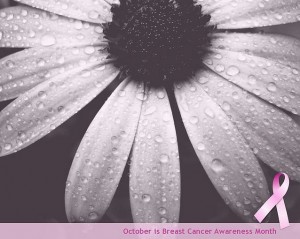Minorities at Higher Risk for Breast Cancer: Get Tested Now!

You’ve heard it before: women of color are at a higher risk to get breast cancer. Why? Read the article below for some interesting insights. As Latinas, it’s fundamental that we get tested–even if there is no family history of breast cancer. Pass the word along and support women’s health.
###
Breast cancer unites women of all color and creed under a common banner of hope. But not all breasts are created equal.
Different minority populations, as well as subgroups within those populations, face distinct challenges and risk factors when it comes to breast health.
“We tend to (group) everything in terms that ‘one size fits all’ as opposed to looking at the disease as it impacts different populations,” said Lovell Jones, director of the Center for Research on Minority Health at the MD Anderson Cancer Center in Houston, and co-founder of the Intercultural Cancer Council.
There’s been a push in recent years to personalize medicine to address the specific social, environmental and genetic risk factors of those subgroups for more effective screening and treatment. Until that happens on an institutional level, it’s up to women to understand individual risks.
African-Americans
Though Caucasians have the highest incidence of breast cancer overall, African-American women have the highest rates of pre-menopausal breast cancer and are more likely to die from the disease at any age.
Socioeconomic status and inadequate access to health care partly are to blame for higher morbidity among black women, but genes also play an important role, Jones said.
African-American women are more than twice as likely as white women to be diagnosed with early-onset, virulent tumors called triple-negatives, so named because they are not fueled by estrogen, progesterone or the HER2neu protein and therefore do not respond to current therapies that block or eliminate those hormones. Women in West Africa are similarly afflicted, Jones said.
Triple-negatives can be removed through surgery if caught early. Trouble is, young women and African-American women tend to have particularly dense breast tissue, making it hard for even a mammogram to catch some tumors.
Research is under way to develop technology to identify tumor cells using a blood test.
Asians and Pacific Islanders
Asian and Pacific Islander women have the lowest rates of breast cancer and morbidity of all the ethnic groups in the U.S. But those statistics can give Asian women a false sense of security, said Scarlett Lin Gomez, research scientist at the Cancer Prevention Institute of California. The subpopulations tell a very different story.
Women of Japanese descent have as high a breast cancer rate as white women, perhaps because they’ve been in the U.S. longest and are exposed to the same environmental and lifestyle risks, Gomez said. Filipina women have the lowest five-year survival rate of any other ethnic group, for reasons unknown.
American-born Asians and immigrants living in the U.S. for a while get breast cancer up to 50 percent more frequently than their counterparts living in Asian countries, likely because of childbearing practices and more sedentary lifestyle, Lin Gomez said. Both Asian and Hispanic women are less likely to get regular mammograms than their white and black counterparts.
Latinas
For Latinas, their lower rate of breast cancer incidence and mortality could be due to earlier age of first pregnancy and greater likelihood of breast-feeding, plus less use of post-menopausal hormone drugs, Thompson said.
But Latinas are more likely than non-Hispanic whites to be diagnosed at a younger age and with worse tumors – even with equal health care access, studies have shown, suggesting a genetic component.
Hispanic women are more likely to have genetic mutations of the BRCA1 gene, which increases a woman’s chance of getting breast cancer in her lifetime, than whites, blacks or Asians, studies have shown. The Hispanic women in one study tended to carry the same mutation as the population most afflicted with BRCA1 gene mutation, Ashkenazi Jews of Eastern European origin.
Lesbians
Lesbians also have higher-than-average risk factors. Research has shown lesbians are less likely than heterosexual women to seek routine health care. They also may be less likely to give birth before age 30, which can contribute to risk.
What can women do with this information?
Women should get a clinical breast exam every three years starting at 20 and a mammogram and exam every year starting at 40, Thompson said. But populations at higher risk should be more vigilant.
Finding the words
What do you say to a friend who has been diagnosed with breast cancer?
Even the best-intentioned person can become speechless or tongue-tied when reacting to a loved one’s breast cancer diagnosis. What should you say? And what should you not say? Several peer counselors at Y-Me National Breast Cancer Organization offered the statements they found most and least helpful to hear during their own breast cancer battles.
Helpful
“I’m here for you, and we’ll see this through together.”
“I’ll organize your friends to make dinners, drive car pools, shop, etc. – whatever would be helpful.”
“I know this is difficult for you, but please know I will do all I can to support you.”
“I’m so sorry you have to go through this, but I’m here to help in any way.”
“Would you like to tell me more about it?”
Not helpful
“You’ll be fine.”
“You poor thing.”
“I know how you feel.”
“I know someone who died from that.”
“Call me if you need anything.”
“Will you be OK financially since you won’t be able to work?”
“I think you should …”












Be the first to comment
Sign in with